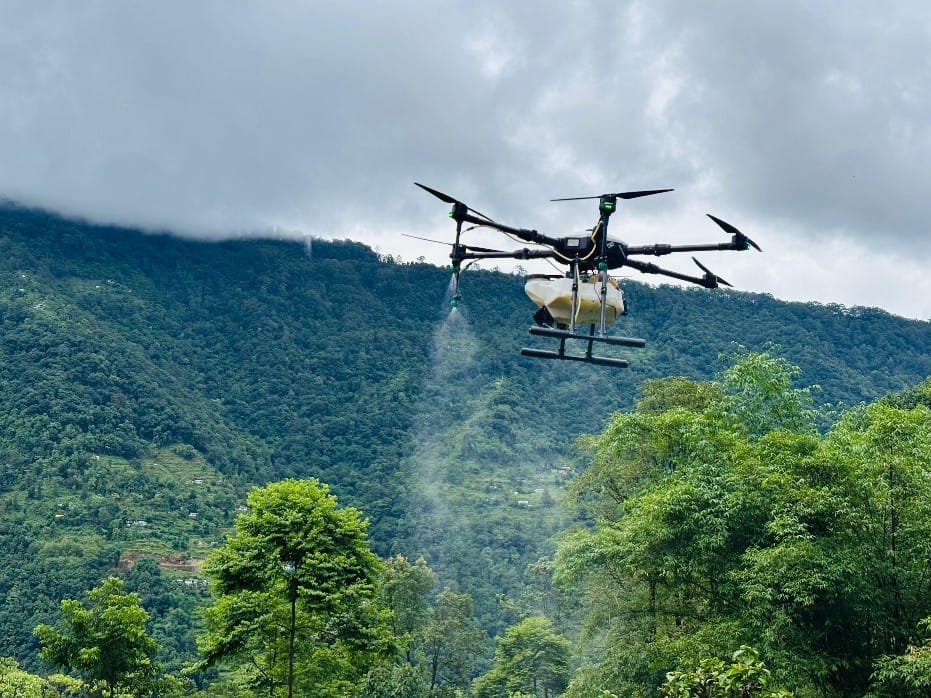
Cardamom, often known as the “Queen of Spices,” is a high-value crop primarily grown in the hilly regions of South India and parts of the Northeast. Traditionally cultivated on undulating terrains under forest canopies, cardamom farming is labour-intensive and challenging. However, recent technological innovations—especially drone spraying technology—are transforming the way this aromatic spice is cultivated and protected.
The Challenges in Traditional Cardamom Spraying
Cardamom plantations are usually located in remote, hilly regions with limited access to mechanized tools. Manual spraying involves:
- Steep slopes and dense vegetation, making it hard to carry equipment
- High labour costs and scarcity of skilled workers
- Non-uniform application of agricultural inputs
- Higher exposure risks for human workers to chemicals
These limitations often lead to inconsistent crop health, pest outbreaks, and yield losses.
How MD-10HV1 Agricultural Spraying Drone is making difference
MD-10HV1 Agricultural spraying drones offer a smart and efficient alternative to conventional methods. Here’s how drone spraying is changing the game for cardamom farmers:
1. Precision Spraying
MD-10HV1 drone uses GPS-guided flight paths and smart algorithms to spray uniformly, targeting the plant canopy and minimizing wastage.
2. Accessibility in Difficult Terrains
With vertical take-off and landing capabilities, MD-10HV1 drone can easily access rugged plantations where tractors or knapsack sprayers can’t operate.
3. Time and Labor Savings
What typically takes several hours or even days of manual labor can now be completed in a fraction of the time using drones.
4. Water and Chemical Efficiency
MD-10HV1 drone uses ultra-low volume (ULV) technology, significantly reducing water usage and ensuring the optimal dosage of agrochemicals.
5. Enhanced Safety
By eliminating the need for workers to enter pesticide-treated areas, drones reduce health hazards related to chemical exposure.
MD-10HV1 agricultural spraying drone is equipped with the intelligent obstacle sensor, whenever the drone detects the obstacles it can bypass or hover at a 3m distance from the obstacles.
Real-World Impact: Case Study from North East of India
In the cardamom-growing belts of North East, we sprayed Multiplex Organic Magik liquid through drone, farmers who adopted drone spraying witnessed:
- 20–30% increase in yield
- Reduction of agricultural inputs usage by up to 40%
- Significant savings in labour costs
- Improved plant health and pest control efficiency
Environmental and Economic Benefits
Drone spraying not only helps farmers but also contributes to sustainable farming practices:
- Lower chemical runoff into nearby ecosystems
- Reduced carbon footprint compared to fuel-driven machinery
- Scalable solution for small and large cardamom plantations alike
